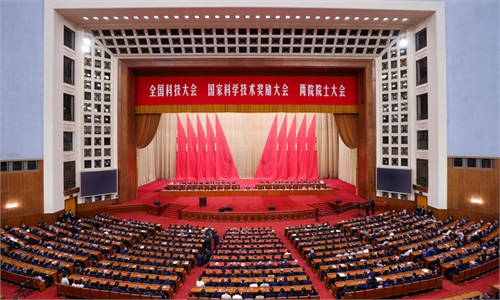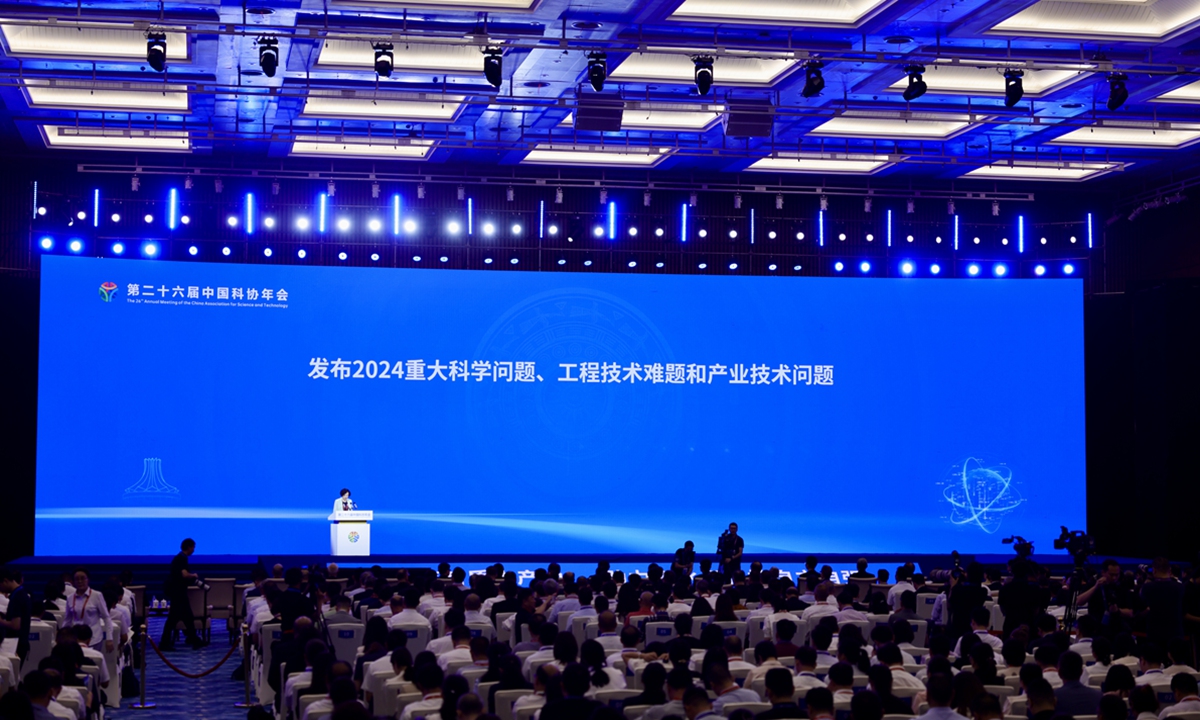
Photo: Deng Xiaoci/GT
The China Association for Science and Technology (CAST) on Tuesday released the 2024 edition of major scientific questions, engineering challenges and industrial technology questions, with 10 of each genre, covering hotspot areas such as artificial intelligence (AI), deep space exploration and pursuit of the country's "dual carbon" goals.
This year's edition marked the seventh consecutive release of the series. Since 2018, the CAST has leveraged its talent and organizational advantages, organizing national societies, federations of societies, enterprise associations, and relevant international organizations for seven consecutive years to carry out major scientific questions and challenges collection and release activities.
The CAST website shows that it has had a relatively significant impact over recent years, playing a crucial role in guiding national departments, including the Natural Science Foundation of China, in deploying research projects. More importantly, it has directed the broader scientific community to follow global scientific development trends, focusing on major needs to conduct original and leading research, thereby enhancing academic and scientific leadership. As a result, its overall influence on mainstream scientific discourse has been increasing year by year.
CAST continued to emphasize that the year of 2024 is also of exceptional significance, as it is a crucial one for implementing the targets and tasks of the 14th Five-Year Plan (2021-25), and also that this year's national "two sessions" included "accelerating the development of new quality productive forces " in the government work report and listed it as the top of the ten major tasks for 2024.
This year also marked a first time that the CAST has expanded its sourcing of information, opening the application process to university science and technology associations. Tsinghua University, Tongji University, and other universities participated in this year's collection work.
The Global Times has learned that research and application of digital human and robots with emotion and intelligence was listed first in the frontier scientific questions, which was proposed by the China Society of Image and Graphics, as the members believe that such research is of great significance for the development of general AI technology, and greatly enhances the user experience and interaction efficiency of general intelligent systems.
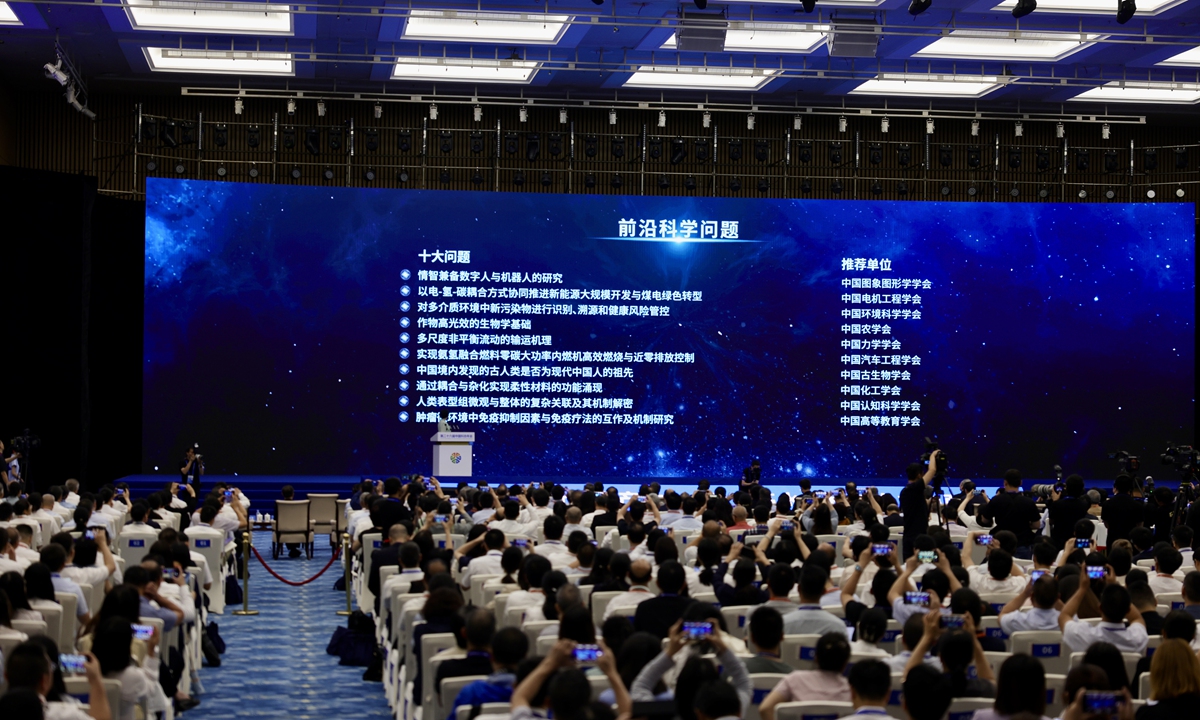
Photo: Deng Xiaoci/GT
The research achievement could be applied in key areas including public welfare sector such as healthcare and education. They can effectively improve the level and coverage of medical services, ensure people's health, improve the quality of education and teaching, provide personalized teaching tailored to individual needs, promote educational equity, and enhance the overall quality of the population, per the image and graphics society.
By deeply understanding the mechanisms of emotional cognition, new ideas and methods can be provided for the design and optimization of artificial intelligence systems, inspiring the development of AI technology to higher levels, it said.
The selected areas involve one topic connected to the independent and controllable high-performance GPU chip development, as Chinese scientists pointed out that most GPUs used in our country's existing computer network are dominated by US chip giants (NVIDIA, AMD, Intel). While this does not seem to pose significant issues in the civilian sector, it presents serious information security risks and supply chain concerns in critical areas such as government, military operations, and the national economy. Therefore, there is an urgent need to develop domestic GPUs and accelerate their adoption.
The engineering technology challenges this year also involved system design and key technologies of ice giant exploration mission which aims to explore Neptune, the farthest planet from Sun in the solar system.
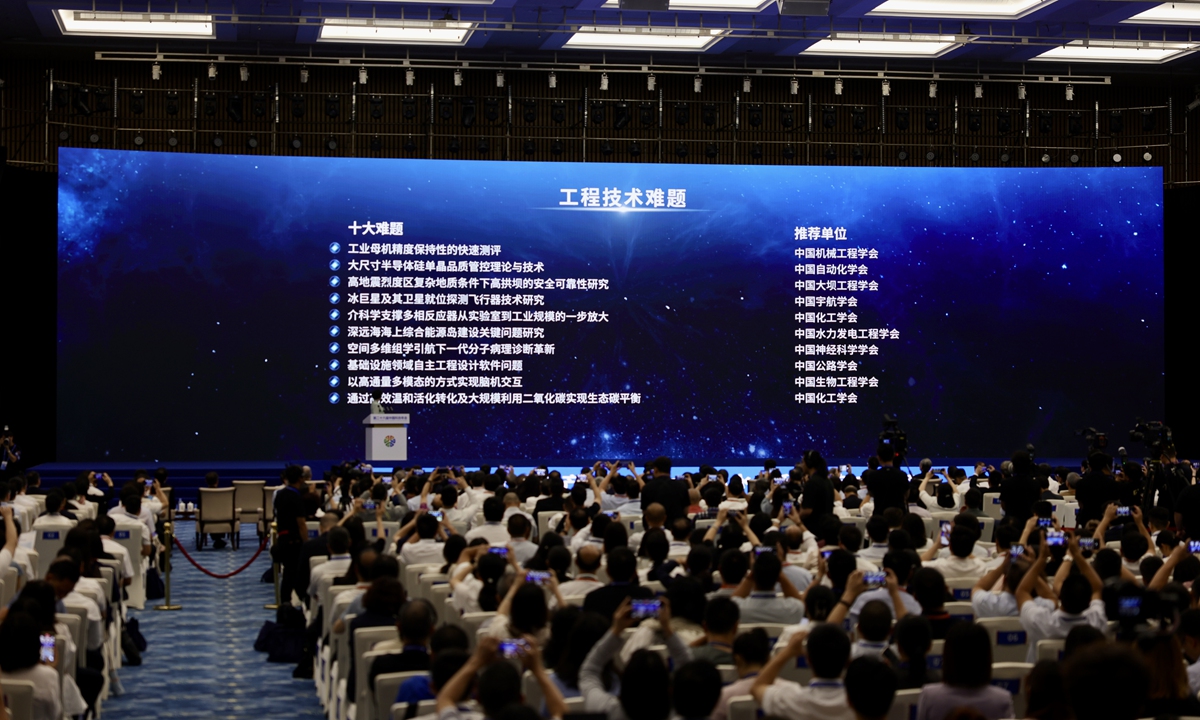
Photo: Deng Xiaoci/GT
A mission to achieve orbit around Neptune, atmospheric entry, and exploration of the moon Triton is expected to provide important clues about the origin of the solar system and planets, as well as the origin of life, holding significant scientific value, the Global Times was told by the Chinese Society of Astronautics (CSA).
The CSA believed that there is an urgent need to conduct research on spacecraft technology capable of reaching and conducting long-term observations at a distance of 30 astronomical units. This will drive the development of key technologies such as intelligent autonomy for long-distance spacecraft, efficient energy and propulsion systems, and telemetry and communication, thereby enhancing the feasibility of in-situ exploration of ice giants.
Although the major planetary exploration projects in China have not yet included targets beyond Jupiter, with the implementation of lunar exploration and planetary exploration projects, China has established an independent, comprehensive, and self-controlled deep space exploration engineering system and scientific research system.
China has demonstrated strong capabilities in the development of deep space spacecraft, high-thrust launch vehicles, interplanetary orbit design, deep space tracking and control networks, and scientific data reception and research. Additionally, significant progress has been made in space nuclear power, enabling the capability of Chinese spacecraft to orbit and explore ice giants, according to the CSA.
To achieve the goal of exploring the ice giant in the deep space, the current challenges included mastering space nuclear energy application technology, multi-task orbit optimization technology and long-distance telemetry and communication technology, it said.
To achieve the country's dual carbon goal reaching the peak of carbon emissions by 2030 and attaining carbon neutrality by 2060, among the 10 selected industrial technology topics, research on carbon emission monitoring methods based on digital technologies was included. The project, proposed by China Institute of Communications (CIC), is significant in addressing how digital technology can be used to solve the challenges of creating a comprehensive carbon source database in carbon emission monitoring scenarios, according to the CIC.
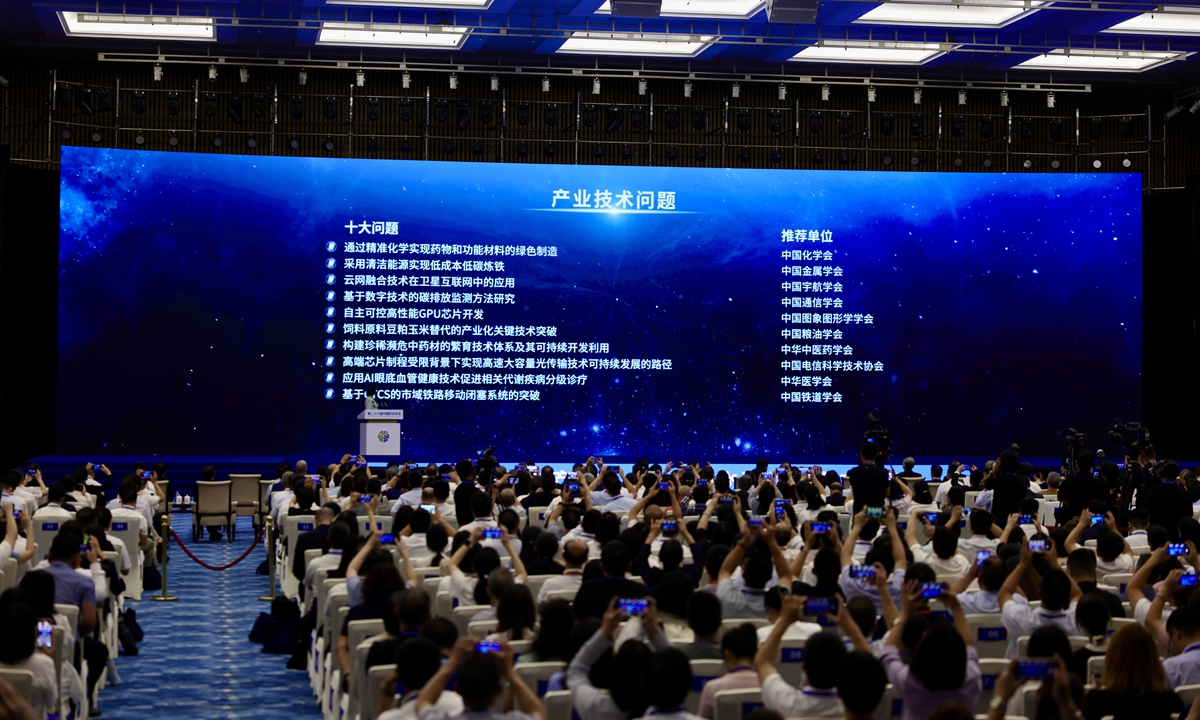
Photo: Deng Xiaoci/GT
It complements the satellite, aerial, and terrestrial carbon emission monitoring systems, providing mutual data validation and supplementation. This helps resolve issues such as discontinuous, unreliable, and inaccurate carbon emission monitoring data, as well as inconsistencies in standards, thereby enhancing the overall monitoring capabilities.
The CIC wrote in their recommendation that although some parks and key industries in China have tried to use digital technology to support the dual-carbon strategy, forming many application scenarios, carbon emission monitoring's use of blockchain, Internet of Things (IoT), and cloud computing is still in its early stages.
The development of technical standards, application scenarios, and supporting mechanisms would help explore the role and principles of blockchain and other digital technologies in carbon emission monitoring and develop standardized technical methods and practical tools to build reliable data platforms. This will meet the nationwide needs for detailed greenhouse gas monitoring, precise localization, and control of emissions from key enterprises and regions, significantly enhancing ecological benefits, the CIC explained.
The 10 major scientific questions also include research on whether the ancient hominids found in China were the ancestors of modern Chinese populations, and high-efficiency combustion and near-zero emission control of heavy-duty internal combustion engines operated with ammonia-hydrogen synergy strategy.
The 10 engineering challenges involve research on the safety and reliability of high arch dams in high seismic intensity zones with complex geological conditions and achieving brain-computer interaction through high-throughput multimodal approaches.
The 10 industrial technology questions for 2024 also comprises those on how to control the sustainable development of high-speed and high-capacity optical transmission systems against the backdrop of chip process constraints.

